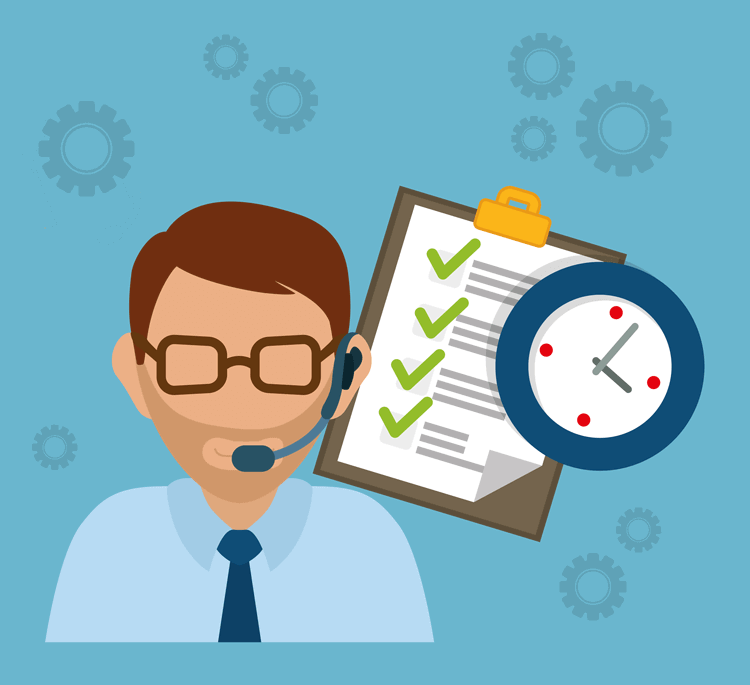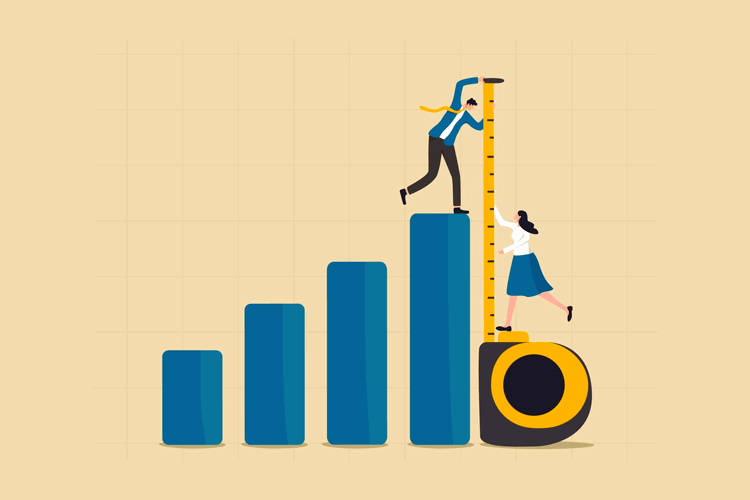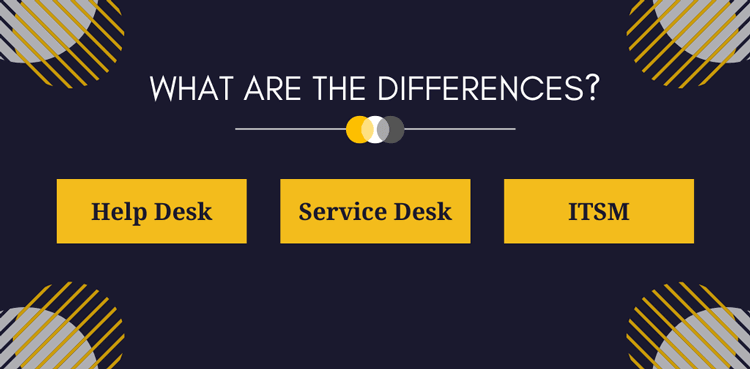Key Elements of Software-as-a-Service (SaaS) Support Models for Customer Service Excellence
In today's hyper-connected and highly competitive business landscape, providing excellent customer support is more critical than ever. The rise of the Software-as-a-Service (SaaS) model has changed the way companies deliver their products and services. Customers now expect instant and responsive support through various channels.
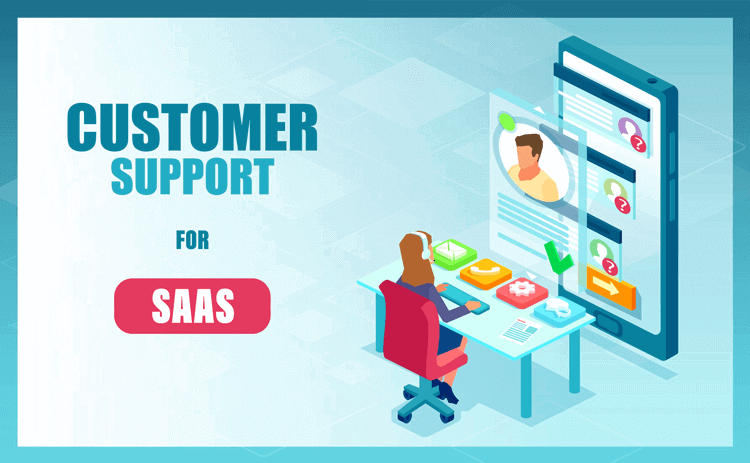
Good or bad customer service can also now make or break a company. And SasS providers are certainly no different.
But what exactly does it take to excel in customer support for Software as a Service?
In this blog post, we will explore the critical elements of customer support excellence for SaaS companies. We'll cover personalized communication, self-service options, fast response times, and more. Learn how to build strong customer relationships, increase retention rates, and drive business growth through excellent customer support.
What Do We Mean by SaaS Support Models?
Customer support models for Software-as-a-Service (SaaS) refer to the set of services and resources that are provided by a SaaS company to its customers to ensure they have a positive user experience with the software. SaaS support includes a range of activities such as troubleshooting, technical support, onboarding, training, and customer success.
These models are aimed at addressing any issues or concerns that customers may have with the software and helping them to get the most out of it. The goal is to ensure that customers are satisfied with the product and are able to achieve their desired outcomes. This ultimately leads to increased retention and customer loyalty.
Key Elements for Top-Notch SaaS Customer Service
- Competitive pricing: A SaaS provider should offer competitive pricing that provides customers with a fair value for their investment. Pricing should be transparent and straightforward, with no hidden fees or charges.
- Onboarding new users/customers: Providing a smooth onboarding process for new users or customers is necessary for ensuring they understand how to use the product and feel confident using it. This can be achieved through clear and concise tutorials, helpful tips and hints, and offering demos or walkthroughs.
- Proactive communication: A SaaS provider should implement a proactive approach to their communication with customers. This includes regular updates about system maintenance, feature releases, and other relevant information.
-
Easy-to-find customer support: Your customers should be able to easily find your support channels, such as email, phone, chat, or a help center. Having clear and prominent links to support options on your website or within the app can go a long way in making customers feel supported.
Good to know: Giva's SaaS customer support model provides its customers with an all-inclusive help portal that enables them to effortlessly search for FAQs, previous tickets, and even create new tickets with minimal clicks. This is because all "help-related" features are consolidated in one centralized location, providing a convenient and efficient customer service experience:
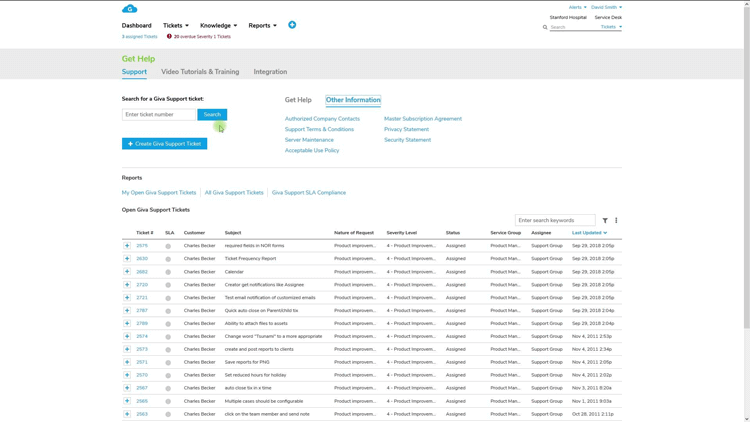
- Omnichannel approach: Great SaaS support plans should include an omnichannel approach. This provides customers with a seamless experience across all channels, including email, phone, chat, social media, and more. It ensures that customers can reach out to you on their preferred channel and receive consistent and accurate information across all touchpoints.
- Feedback loop between customer service and development: There should be a strong feedback loop between customer service and development teams. This means that the development team regularly receives customer feedback and support communications. Then can then work to address them in future updates or releases.
- Data security and privacy: A SaaS provider should prioritize data security and privacy, and this should be communicated to customers transparently. They should also provide customers with the necessary tools and resources to protect their sensitive information.
-
Self-help options: Providing customers with self-help options can be a great way to empower them to solve issues on their own. Examples are using a knowledge base or knowledge management system. These support models can save time for both the customer and the support team. They also provide customers with a sense of control and ownership over their experience.
Good to know: The following is a video detailing Giva's Customer Self-Service Portal. Giva clients can provide support for their customer by allowing search through their own company's knowledge FAQ's and easily open a new ticket if more assistance is necessary:
Other SaaS Customer Service Best Practices to Consider
A few other SaaS customer success best practices include:
- Prioritize response time: Respond to customer inquiries as quickly as possible. This can be achieved through automation, including AI chatbots. It can also include automated responses for common questions as well. Further, customer service representatives can be assigned to specific channels to monitor them regularly.
- Be empathetic: Show empathy and understanding when dealing with customer issues or complaints. This can help to diffuse tense situations and build a stronger relationship with the customer.
- Follow up: After resolving a customer's issue, follow up to ensure they are satisfied with the solution. This can also provide an opportunity to gather feedback and suggestions for future improvements.
The Bottom Line: Customer Service is as Important as Your Product
Delivering excellent customer support is more essential than ever, particularly for SaaS providers.
A study conducted by PwC, and shared by Ali Sedighi on LinkedIn, found that 86% of customers are willing to pay more for better customer service. This highlights the significant impact of customer support on business growth and revenue.
When planning their support models, SaaS companies need to examine and employ the critical elements of customer support excellence. These include personalized communication, self-service options, and fast response times, among others. By prioritizing customer service, SaaS providers and business owners can meet customer expectations, improve retention rates, and drive business growth.

